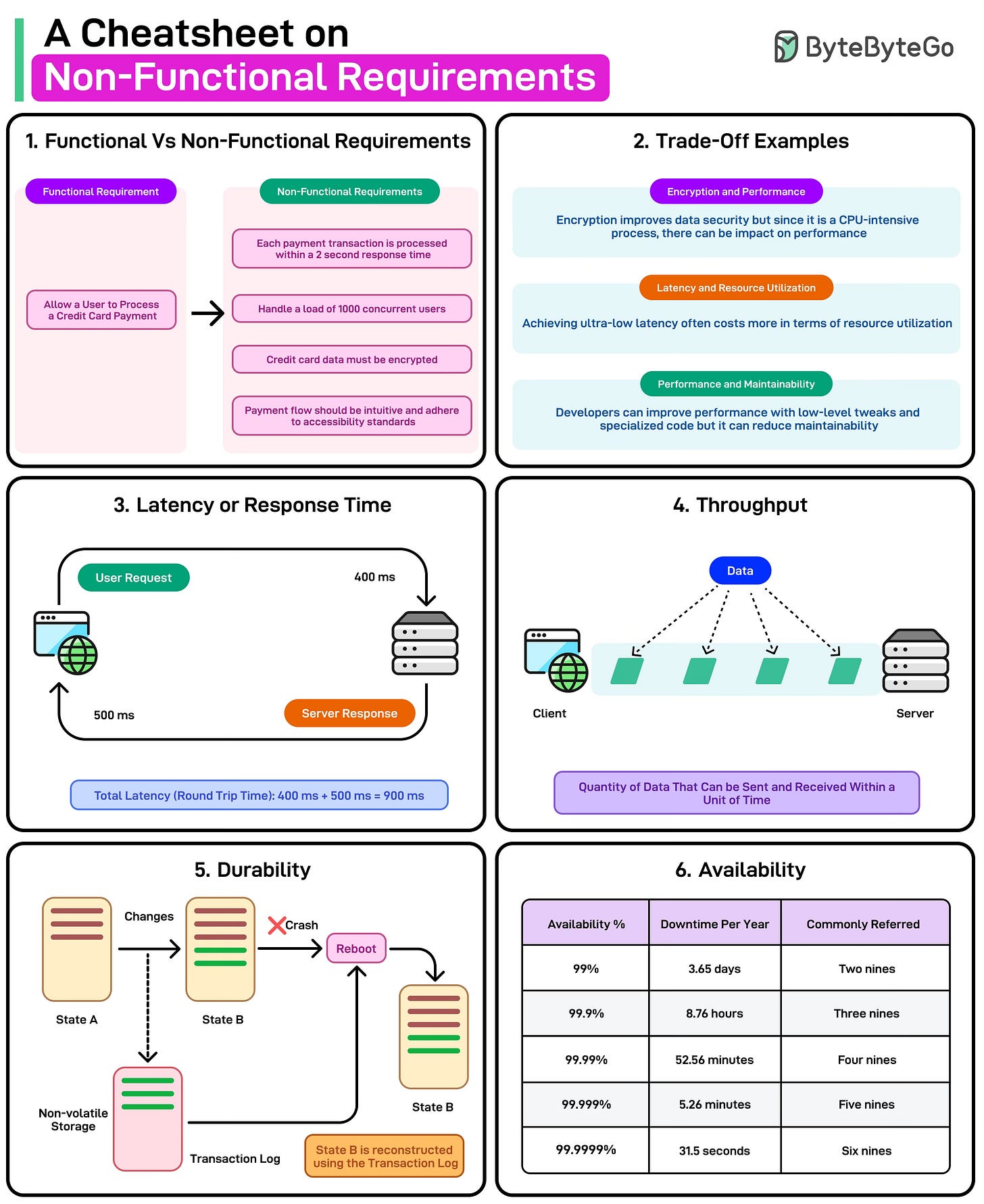Non-Functional Requirements: The Backbone of Great Software - Part 1
Non-functional requirements (NFRs) are as critical as functional requirements because they define a system's qualities and operational parameters.
While functional requirements specify what a software product should do (for example, “users must be able to log in”), non-functional requirements define how well it must accomplish these tasks under real-world conditions (for example, “the login process should respond within two seconds under peak load” or “all user credentials must be encrypted and stored securely”).
Together, functional and non-functional requirements create a foundation for building great software systems.
NFRs are essential for the following reasons:
Quality of Service: NFRs like response time, availability, and usability directly affect the user’s perception of quality. A system that fulfills its functional requirements but is slow, constantly crashes, or is difficult to use can undermine user trust and satisfaction.
System Stability: Requirements such as reliability, fault tolerance, and recoverability help maintain stable operation even when part of the system fails. Without these, unhandled errors can escalate into large-scale outages.
Security and Compliance: Security-related NFRs dictate how data is protected, how access is controlled, and how audits are conducted. Neglecting these can lead to breaches, legal consequences, or reputational damage.
Scalability and Performance: Requirements for throughput, capacity, and resource utilization ensure the software can handle growth in users or data. If not addressed from the start, scaling can become prohibitively expensive or technically challenging later on.
Maintenance and Evolution: Maintainability, testability, and modularity requirements determine how easily bugs can be fixed, features added, or adaptations made to changing environments. Overlooking them can lead to ballooning technical debt, slowing down future development.
In short, non-functional requirements are not mere “nice-to-haves” but essential components that ensure a software system truly meets user expectations and withstands real-world challenges.
In this article (Part 1), we’ll look at the differences between functional and non-functional requirements. Then, we’ll explore the various trade-offs in NFRs and their architectural impact on building systems.
Functional vs Non-Functional Requirements
Keep reading with a 7-day free trial
Subscribe to ByteByteGo Newsletter to keep reading this post and get 7 days of free access to the full post archives.


